Insiders still have no idea what's going to happen to Russian oligarchs' seized superyachts
- It's been two years since Russia invaded Ukraine, leading to sanctions against Russian oligarchs.
- Many of their superyachts were seized or frozen , leading industry insiders to question their fate.
- The yachts, some of which are worth hundreds of millions of dollars, remain in a state of limbo.

More than two years after Russia invaded Ukraine, the boating world still doesn't have many answers about what's going on with the very large, expensive elephants in the sea: oligarchs' superyachts .
The war prompted many governments to enact sanctions against Russia's richest , including seizing their superyachts worth hundreds of millions of dollars. But it's unclear whether they can be sold or who'd buy them, leaving ports peppered with massive boats stuck in a floating limbo.
"The Russian problem, it's becoming a bigger and bigger and bigger problem," one luxury yacht broker told Business Insider at the Palm Beach International Boat Show last week. Like many others, he requested not to be named, given the sensitive nature of the matter at hand and the generally discreet nature of the industry.
Russia has been a massive player in the massive boat market for a long time. In August 2021 — about six months before Russia's Ukraine invasion — Russians owned the second-largest share of yachts over 40 meters in length, according to a report from the industry publication SuperYacht Times.
They were responsible for 16% of new build superyacht purchases in the decade preceding the report and are known for splashing out on extravagant interiors and unique features. (One builder BI spoke to recalled a mandate from an oligarch for a large safe in the owner's cabin in which he could keep his rifles. The builder later learned he'd use them to skeet shoot on deck.)
But those sales have now screeched to a halt as oligarchs get hit by international sanctions. At least a dozen superyachts — worth well over $1 billion combined — have been affected.
And no one is quite sure what will happen to them.

Russia's sanctioned superyachts are hard to buy and sell
The first problem is that many of the yachts are "frozen" — not seized. That means that although the Russian owners can't operate or collect them, they don't technically belong to an overseas government, so they can't be sold without special permission.
Earlier this month, federal prosecutors petitioned a judge asking for consent to sell the Amadea, the 106-meter superyacht that has been docked in San Diego and costs the US as much as $922,000 a month to maintain.
"I've had some inquiries, but all you can tell them is we don't know the outcome yet" of the case, another superyacht broker told BI at the yacht show.
Related stories
And despite the broker's claim of interest in yachts like Amadea , most ultrarich — or at least their brokers — don't want to go near the vessels with a ten-foot pole, even if the government does get legal permission to sell them.
"How does it look if you bought a Russian boat?" Julia Simpson, a broker at Thompson of Monaco, said. "Even if it's completely legal and normal, there are too many things on the line," she said, like how the original owner got their money and whether that could make the new buyer look bad.
There are also possible legal implications, as it's hard for the government to prove who actually owns the yachts.
"Oligarchs typically structure their ownership of these high-value assets through a web of offshore shell companies and trusts that is designed to conceal the true owner," Joshua Naftalis, a former federal prosecutor who now works for Pallas Partners, told BI.
And if the government does assume ownership, it's highly dependent on court orders. For example, a Russian whose yacht had been seized by the French government regained access to his boat after winning a legal battle in 2022.
"It's a very difficult process to buy them," Ralph Dazert, the head of intelligence at SuperYacht Times, told BI. "There is a high risk of the former (Russian) owner suing you to get the boat back."
He pointed to the Alfa Nero, the 82-meter yacht that Eric Schmidt planned to purchase for $67 million last year in an auction put on by Antigua and Barbuda. He backed out after various parties tried to block the sale, likely deeming it not worth the legal headache.
"When the reason for sanctioning goes away, which it may do," the Russian owners will try to get their boats back , Simpson said. After all, "the government's not going to pay them."'
That said, if sanctions are dropped, the yachts will be worth much less than when they were seized, as a boat not in use deteriorates much faster than one sailing the seas.
"Those yachts need to be used to be kept in shape, kept in condition," the second broker said. "Just having them sit at the dock with a temporary crew on board is not good for the boats."
And the sanctioned Russians who have managed to maintain control of their superyachts won't have an easy time offloading them in the future.
Americans who try to do business with sanctioned oligarchs would have a number of hoops to jump through — like finding a bank to process the purchase, which would be next to impossible. If somehow they did and the government caught wind, they'd face hefty penalties and the transaction would be void.
So Russia's richest have found themselves "stuck" sailing in a select few countries that will let them, like the Maldives, Montenegro, and Dubai.
Watch: Video of Russian naval ship explosion shows a much-needed win for Ukraine
- Main content
While sanctions rain down, Russian billionaires are sending their luxury yachts to hide out in the Maldives
When US President Joe Biden announced a taskforce to hunt down the assets of Russian billionaires, he made a very specific threat.
"We will find and seize their yachts, their luxury apartments, their private jets," he said in response to the Russian invasion of Ukraine.
By seizing the prized possessions of Russian oligarchs, the US and its allies hope to put pressure on the men who help keep President Vladimir Putin in power.
And no possession appears to be more prized than their superyachts, which are more like floating mansions worth up to $800 million.
Even before the US vowed to come for the yachts, Russia's oligarchs appeared to be anticipating the move.
Marine traffic mapping has shown a steady stream of vessels hightailing it out of the Black Sea through the Bosphorus Strait for friendly waters.
But how easy will it be to keep a slow-moving, 15,000-tonne 'pleasure craft' out of the hands of authorities?
Putin got his tri-deck superyacht out of Germany before he launched the invasion
In late February, when war in Ukraine looked imminent, an 82-metre superyacht named Graceful suddenly left Germany where it had been docked for repairs.
The substantial renovation that included the construction of two new balconies was expected to stretch on for months.
But local media reported that Graceful made a "hasty" exit from the shipyard .
Vladimir Putin has always insisted he lives off his government salary and owns a humble apartment and a beat-up Soviet-era car.
But the superyacht community — a group of boat enthusiasts who monitor the comings and goings of the world's most luxurious vessels — insist Graceful belongs to Vladimir Putin .
The yacht was built at a shipyard used by the Russian navy, it is manned exclusively by Russian sailors, and it spends a curious amount of time anchored near Mr Putin's holiday house in Sochi.
Graceful, which boasts a helipad, enough space for 12 guests and 14 crew, and a swimming pool that can be converted into a dancefloor, reportedly cost about $135 million.
"Our design brief was interesting: something timeless," Jonny Horsfield, who oversaw the yacht's fit-out, told Boat International magazine in 2015 .
"The owner is a very confident person. He knows what he likes and he's not a slave to trends."
Graceful is now docked in Russian territorial waters in Kaliningrad , according to satellite images obtained by CBS.
Some weren't so fast — Kleptocapture is coming for the rest
While Putin's superyacht appears to be safe and sound — for now — some of his closest associates may not have been so lucky.
Italian authorities have taken control of yachts belonging to Russian billionaires Alexey Mordashov and Gennady Timchenko.
Mr Mordashov's Lady M is in Imperia while Mr Timchenko's Lena is in Sanremo.
France has seized a yacht linked to Igor Sechin , an oil boss and former Russian deputy prime minister, in the Mediterranean port of La Ciotat.
According to the Guardian, France's Finance Minister said authorities were able to link Amore Vero to a company owned by Sechin.
Others have been trickier to trace.
Billionaire mining magnate Alisher Usmanov was among the names on the White House's hit list when they announced the 'Kleptocapture taskforce' set up to track down oligarchs' assets.
His superyacht is valued at $US600 million and regarded by some measures as the world's biggest (but not longest) yacht.
Dilbar is currently docked at the Hamburg shipyards, but shortly after Usmanov was hit with sanctions, Forbes reported that refitting and maintenance work stopped .
According to the Forbes report, Dilbar is registered in the Cayman Islands and owned through a holding company, which made it more difficult to pin down.
It cited a statement from Hamburg's Ministry for Economy and Innovation as saying restrictions can be imposed on a yacht owned by a sanctioned Russian individual only "if the ownership situation is clearly clarified and all these possessions are also sanctioned".
Italian authorities have also seized Mr Usmanov's Sardinian villa, and Kleptocapture has set its sights on his private jet.
The point of "seizing" these opulent assets is not to chain them up and tug them back to an impound lot, but rather to target the deep pockets of the oligarchs who own them.
In an article for Super Yacht News , analyst Jack Hogan explained that port authorities and customs restrict their passage of movement, and that of anyone providing goods and services on board.
It puts the crew who staff these extravagant vessels in a tricky situation.
"The reality is that crew and contractors may well be in breach of sanctions if they provide goods or services to the yacht," superyacht lawyer Duncan Bateson told Hogan.
Oligarchs are sailing for friendlier seas without extradition treaties
Those perhaps looking to avoid the impending storm of sanctions are sending their floating mansions to an oasis: the Maldives.
Aside from its natural draw as a tropical paradise in the middle of the Indian Ocean, the Maldives also has no extradition treaty with the United States.
According to Marine Traffic, at least five Russian-owned superyachts were anchored or cruising in the Maldives last week , including several whose billionaire owners have not yet been named in sanctions lists.
Among them were Titan, owned by Alexander Abramov, a co-founder of Russian steel producer Evraz; and MySky, owned by retail and cigarette magnate Igor Kesaev.
Aluminium boss Oleg Deripaska has been subject to US sanctions since 2018 , over what the Treasury Department referred to as Russia's worldwide "malign activity", including interference in the 2016 US presidential election.
His 73-metre yacht Clio was also anchored off the coast of Male last week, according to Reuters reports.
Others seem to have their sights set on safe havens elsewhere.
Nirvana, owned by Vladimir Potanin, who is believed to be Russia's richest man , left the Maldives on March 1, headed towards the Oman Gulf.
Galactica Super Nova, owned by Russian oil baron Vagit Alekperov, reportedly left Barcelona and arrived at Tivat port, Montenegro last week.
Eclipse, the world's second-largest private yacht, owned by Russian businessman Roman Abramovich, was last spotted off Puerto Rico in the Caribbean. Another of his yachts, the Solaris, is moored at a Turkish port in the Mediterranean.
Mr Abramovich, who is yet to come under any UK sanctions, has started selling off assets including his beloved Chelsea Football Club . He has pledged to donate any net proceeds to help victims of the war in Ukraine.
Of course, even nations like the Maldives and Montenegro, who haven't signed extradition treaties, may still negotiate with the US and other countries to secure the "ill-begotten gains".
What does seizing their yachts achieve?
While the superyachts have become gleaming symbols of Russia's kleptocracy, their total value is likely only a tiny slice of what's been stolen from the nation over the years.
In 2018, three economists concluded that the equivalent of up to 60 per cent of Russia's GDP was being held in offshore havens .
But with Russia's economy in freefall and the favourite toys of the ultra rich under threat, some billionaires are cautiously speaking out against the war.
"Peace is very important!" Clio's owner, Oleg Deripaska, said in a social media post.
"Negotiations need to start as soon as possible!"
And Mikhail Fridman, one of Russia's richest men, said the war in Ukraine was a "tragedy" and called for the "bloodshed" to end.
"I do not make political statements, I am a businessman with responsibilities to my many thousands of employees in Russia and Ukraine," he said as sanctions were imposed on his London-based investment group," he said.
"I am convinced however that war can never be the answer. This crisis will cost lives and damage two nations who have been brothers for hundreds of years."
- X (formerly Twitter)
Related Stories
Italian police seize $200m in russian oligarchs' assets.
French officials seize Russian oligarch's yacht as it prepares to 'sail off urgently'
- Economic Sanctions
- Russian Federation
- Unrest, Conflict and War
Advertisement
Supported by
Russian Superyachts Find Safe Haven in Turkey, Raising Concerns in Washington
Turkey’s welcoming ports are symptoms of a much larger problem: evasion of U.S. sanctions against Russia.
- Share full article

By Elif Ince , Michael Forsythe and Carlotta Gall
PORT AZURE, Turkey — On a hot August evening at a marina on Turkey’s southern coast, the crew of the Flying Fox was hard at work, keeping the 446-foot superyacht immaculate for future guests willing to pay $3 million a week. One crew member leaned over the railing at the stern, wiping the highly polished surface next to the ship’s nameplate. Another was busy with a squeegee, cleaning glass.
The Flying Fox, the world’s biggest yacht available for charter, played host last year to Beyoncé and Jay-Z, who skipped the Met Gala in New York to cruise the Mediterranean and enjoy the vessel’s over-the-top amenities: a 4,300-square-foot wellness center with a Turkish bath and a fully equipped beauty spa, among many others.
Then Russia invaded Ukraine. Since then, the Flying Fox has been caught up in the dragnet of international sanctions designed to hobble the lifestyles of the oligarchs who help sustain President Vladimir V. Putin’s rule.
Yet, while some superyachts owned by or linked to Russian oligarchs facing sanctions have been seized in ports around the world, the Flying Fox and others caught up in the broader Russia penalties have found safe haven in Turkey, the only NATO member not to impose sanctions on Russia.
The flotilla of Russian superyachts in Turkish waters is raising tensions with the United States, which sees Turkey’s welcoming of the vessels as a symptom of the much larger problem: Russia’s access to Turkey’s financial system, potentially undermining Western sanctions.
Turkey’s strongman leader, President Recep Tayyip Erdogan, who has criticized Western sanctions against Russia, said in March that Turkey could not impose sanctions because of its energy needs and industry deals. “There is nothing to be done there,” he said.
In all, at least 32 yachts tied to oligarchs and sanctioned entities have sheltered in the country’s waters in recent months, able to move about or moor in its picturesque coves and bays without fear of seizure, according to a New York Times analysis. Ownership records of superyachts for the ultrawealthy are notorious for being hidden behind layers of shell companies. The Times analysis was constructed with news accounts linking Russian oligarchs to particular yachts that were then matched with vessel positions available on commercial sites such as MarineTraffic . In many instances, the yachts were spotted in Turkish waters by a Times reporter.
On Aug. 19, the Treasury Department issued a statement saying that the deputy treasury secretary, Wally Adeyemo, had told a Turkish official that the United States was concerned about Russians using Turkey to evade sanctions.
Three days later, Mr. Adeyemo sent a letter to Turkish business groups warning of penalties if they worked with Russian individuals or entities facing sanctions. Turkish banks, he added, risked losing vital correspondent relationships with global banks — and even access to the U.S. dollar — if they did business with sanctioned Russian banks.
In September, several Turkish banks stopped accepting the Mir payment system — the Russian equivalent of Visa or MasterCard. Their actions came after the United States warned that financial institutions expanding the use of Mir or entering into new agreements risked running afoul of American sanctions against Russia.
Nevertheless, Turkish marinas continue to service sanctioned Russians and their superyachts.
The warm turquoise waters, secluded beaches and trendy establishments of Turkey’s Mediterranean coast have long made it a popular and convenient destination for Russian yacht owners and charterers during the summer. Local restaurant menus are printed in three languages: Turkish, English and Russian.
In June, the Flying Fox was singled out by the United States as “ blocked property ” and its management company, Imperial Yachts, was also sanctioned. Nevertheless, the Flying Fox has been moored since at least May at Port Azure, a marina in the posh resort town of Göcek. Other superyachts there owned by or linked to sanctioned Russians have been cruising from one postcard-worthy cove to another in the area.
The town’s polluted waters are unsuitable for swimming, an attractive feature for superyacht owners because it keeps away crowds and unwanted publicity. And the vessels can easily steam to pristine waters nearby. If the pampered guests have any unfulfilled needs, small boats roam around the harbor, selling groceries, ice cream, Turkish crepes and even massages.
Port Azure, touted as the first “mega-yacht-only marina” in Turkey, was opened last year by STFA, one of Turkey’s biggest conglomerates. The marina , which prides itself on its website as being a “haven” that makes “problems big and small go away,” has hosted at least eight yachts linked to Russian oligarchs or sanctioned companies this past summer, the Times analysis found.
On June 1, a Turkish yacht broker posted on Instagram a video taken at Port Azure showing a lineup of five yachts collectively worth almost $1 billion, including the Flying Fox; the Lana, recently listed at $1.8 million a week for charter by Imperial; and the Galactica Super Nova, linked to Vagit Alekperov, a sanctioned Putin ally, according to news media reports.
As of Oct. 20 there were at least 13 yachts in Turkey linked to sanctions, the Times analysis found. Of those, four were owned by or linked to sanctioned individuals and nine have recently been offered for charter by Imperial, the sanctioned Monaco-based company.
A spokeswoman for Imperial Yachts said that after the firm was sanctioned in June, its clients terminated their contracts with the company and that it “no longer manages or charters” any of the yachts in Turkish waters.
But until late August, Imperial advertised yachts for charter and for sale on its website, including yachts in Turkish waters. After an inquiry by The Times, the listings were removed from Imperial’s website, which now displays only a notice announcing that the company had been sanctioned. The company spokeswoman said that it had “kept its other pages alive as a reflection of its former brand.”
“During the time that the other website pages were visible, Imperial did not engage in any business engagements,” Imperial said in response to emailed questions.
Roman Abramovich, the most visible Russian oligarch recently seen in Turkey, does not use Imperial Yachts to manage the construction of his opulent yachts or staff them after they are put to sea. Four yachts owned by or linked to Mr. Abramovich, who has been sanctioned by Britain and the European Union, the Times analysis shows, were in Turkey in August.
Should the United States choose, it has tools at its disposal to enforce its sanctions on the Russian oligarchs, even if their vessels are in Turkish waters and even if the Turkish government is unwilling to cooperate, said Daniel Tannebaum, a former sanctions official who served at the U.S. Treasury and the Federal Reserve Bank of New York.
One way, he said, would be to place sanctions on companies that service the oligarchs’ yachts in Turkey — the marinas, caterers and fueling companies. In that case, not just Russian yacht owners but also the many American yacht owners now in Turkish waters would have to take their business elsewhere, while the banks that do business with these companies might close their accounts so as to avoid becoming a target.
Superyachts are a significant source of income for the marinas, as well as other businesses in the area. In one example, Turkish news media outlets reported in April that Mr. Abramovich’s biggest yacht, the 533-foot-long Eclipse, ran up a fuel bill of $1.66 million in the port town of Marmaris. Its tanks took 22 hours to fill.
One of the four superyachts linked to Mr. Abramovich, the 460-foot Solaris, is moored in the Yalıkavak Marina in Bodrum, a trendy resort town in Turkey’s south. While lying idle, it still has 20 crew members who make trips every day to provision it, supply it with water and electricity and dispose of its waste, according to a port employee with direct knowledge of the matter, who spoke anonymously because he wasn’t authorized to speak publicly.
Solaris also receives a truckload of food every week through a catering company, he said, adding: “Twenty cases of asparagus — what would you do with so much asparagus?”
Yalıkavak is Turkey’s most luxurious marina, with stores like Prada, Louis Vuitton and Valentino on a promenade lined with palm trees overlooking the harbor. At least three yachts recently offered for charter by Imperial, the sanctioned management company, and three other yachts owned by or linked to oligarchs moored at Yalıkavak Marina this summer, the Times analysis shows.
In an emailed statement, the marina said that even though Turkey has not adopted sanctions, because it recognizes “international concerns,” the Solaris has been kept outside the marina’s boundaries. As for the vessels associated with Imperial Yachts, the marina said that it did not know, as the summer is “quite a busy time” and that it didn’t have a system in place to check whether an individual yacht might fall under international sanctions.
In August, the Eclipse, one of the yachts linked to Mr. Abramovich, was anchored in the middle of the bay off Göcek, a three-and-a-half-hour drive down the coast from Yalıkavak.
On an early morning in August, Ömer Kırpat, 56, was fishing on the shore in Göcek, sitting under a willow tree overlooking the yachts.
“The bells aren’t jingling,” he said, pointing to the bells attached to his rods to alert him when the fish bite. He showed his bucket with one lone fish inside, explaining that the fish avoid the shore because of pollution and noise from the boats.
Port Azure, the Göcek marina hosting the Flying Fox, was built over the port of a state-owned paper factory where Mr. Kırpat worked for 13 years as a security guard until it was privatized in 2001. He used to go there to swim, fish and have picnics every weekend with other factory workers and their families. “It was sparkly clean,” he said. “We caught the biggest fish there.”
He tried to go into Port Azure last year but was chased away. “We’re banned,” he said. “Soon they won’t even allow us to look inside. It’s heartbreaking.”
Michael Forsythe is a reporter on the investigations team. He was previously a correspondent in Hong Kong, covering the intersection of money and politics in China. He has also worked at Bloomberg News and is a United States Navy veteran. More about Michael Forsythe
Carlotta Gall is a senior correspondent currently covering the war in Ukraine. She previously was Istanbul bureau chief, covered the aftershocks of the Arab Spring from Tunisia, and reported from the Balkans during the war in Kosovo and Serbia, and from Afghanistan and Pakistan after 2001. She was on a team that won a 2009 Pulitzer Prize for reporting from Afghanistan and Pakistan. More about Carlotta Gall
Our Coverage of the War in Ukraine
News and Analysis
President Volodymyr Zelensky of Ukraine has signed into law three measures aimed at replenishing the ranks of his country’s depleted army, including lowering the draft age to 25 .
With continued American aid to Ukraine stalled and against the looming prospect of a second Trump presidency, NATO officials are looking to take more control of directing military support from Ukraine’s allies — a role that the United States has played for the past two years.
Exploding drones hit an oil refinery and munitions factory far to the east of Moscow, in what Ukrainian media and military experts said was among the longest-range strikes with Ukrainian drones so far in the war .
Conditional Support: Ukraine wants a formal invitation to join NATO, but NATO has no appetite for taking on a new member that, because of the alliance’s covenant of collective security, would draw it into the biggest land war in Europe since 1945.
“Shell Hunger”: A desperate shortage of munitions in Ukraine is warping tactics and the types of weapons employed. What few munitions remain are often mismatched with battlefield needs as the country’s forces prepare for an expected Russian offensive this summer.
Turning to Marketing: Ukraine’s troop-starved brigades have started their own recruitment campaigns to fill ranks depleted in the war with Russia.
How We Verify Our Reporting
Our team of visual journalists analyzes satellite images, photographs , videos and radio transmissions to independently confirm troop movements and other details.
We monitor and authenticate reports on social media, corroborating these with eyewitness accounts and interviews. Read more about our reporting efforts .
Sanctioned Russian tycoon tricked the authorities and saved his second superyacht by rushing it back home to Russia at full speed. Owner of one of the world’s largest luxury yacht builders his 114-foot vessel comes with a huge water slide.
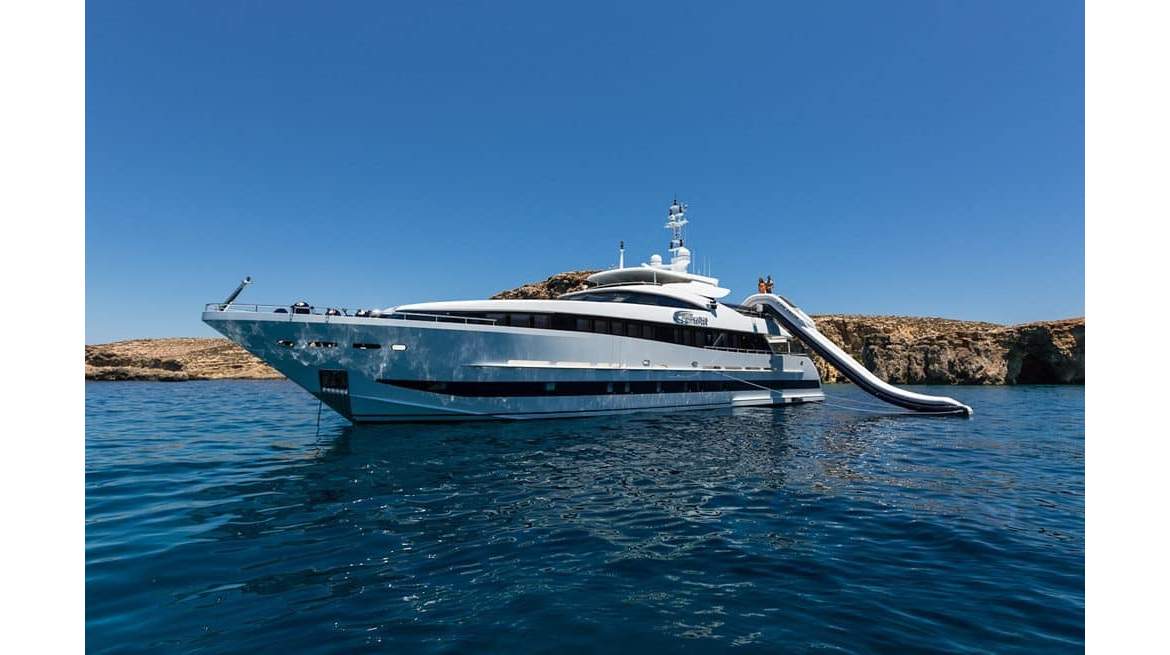
You may also like

While his brother owns the world’s largest superyacht – This billionaire sheik may have bought himself the newly launched $450 million Lurssen Opera megayacht – The 478 feet long vessel is spread across 7 decks, has a large swimming pool, and a beach club.

The surprising reason Mark Cuban’s exclusive American Express Black Card was declined when he wanted to buy a $140,000 bottle of champagne in a Miami night club.

No expensive gifts or credit cards – The strict and humble parenting style of billionaire Mark Cuban – His teenage daughter Alexis took summer jobs instead of vacationing in the Hamptons. His mansions have no butlers or chefs, & everyone does the household chores.
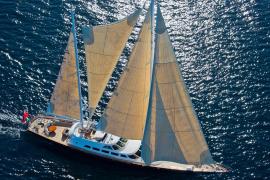
Italy’s most controversial Prime Minister puts his lavish superyacht on the market for $11 million
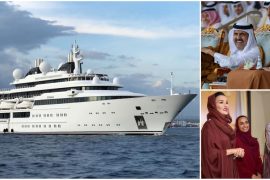
Longer than a FIFA soccer field, the Qatari royal family’s yacht is so big that it can be mistaken for a cruise ship – The $400 million vessel is built for utmost comfort and privacy, its unique stabilization system offers a smooth journey even in rough seas.

She did not own a television and had not taken a vacation for 10 years – 6 interesting facts about the disgraced billionaire Elizabeth Holmes – The Theranos founder woke up at 4 am every day and ‘thanked god’.
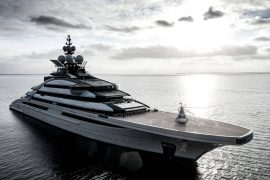
Sheltered in safe shores where they will never be seized – These are 5 of the biggest yachts owned by sanctioned billionaires which are proudly sailing under the Russian flag.

Mukesh Ambani, Asia’s richest man sold his rather humble and tiny New York condo for $9 million
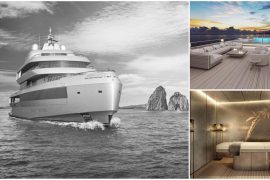
A greek crypto-tycoon has purchased this stunning 236 feet long superyacht designed by Giorgio Armani
We've detected unusual activity from your computer network
To continue, please click the box below to let us know you're not a robot.
Why did this happen?
Please make sure your browser supports JavaScript and cookies and that you are not blocking them from loading. For more information you can review our Terms of Service and Cookie Policy .
For inquiries related to this message please contact our support team and provide the reference ID below.
- Environment
- Road to Net Zero
- Art & Design
- Film & TV
- Music & On-stage
- Pop Culture
- Fashion & Beauty
- Home & Garden
- Things to do
- Combat Sports
- Horse Racing
- Beyond the Headlines
- Trending Middle East
- Business Extra
- Culture Bites
- Year of Elections
- Pocketful of Dirhams
- Books of My Life
- Iraq: 20 Years On

16 superyachts owned by Russian oligarchs
Western sanctions over moscow's invasion of ukraine led to many luxury vessels being detained in europe.

Two superyachts linked to Russian billionaire Roman Abramovich were spotted on the Turkish coast on Tuesday, 'Eclipse' and 'My Solaris'. Mr Abramovich is among several wealthy Russians added to an EU blacklist as governments act to seize their yachts and other luxury assets. AP

Live updates: follow the latest news on Russia-Ukraine
Several luxury yachts owned by wealthy Russians have been detained across Europe this month.
It comes after the West imposed sanctions on oligarchs over Moscow's invasion of Ukraine .
Some have taken evasive action – two such superyachts linked to billionaire Roman Abramovich were spotted approaching the Turkish coast on Tuesday. A group of Ukrainians tried to stop one of the yachts from docking in Turkey.
Chelsea FC owner Mr Abramovich is one of several oligarchs who were added to an EU blacklist last week as governments acted to seize yachts and other luxury assets owned by the billionaires.
Western sanctions resulted in many large vessels relocating from Europe in the past few weeks. Several have headed to places such as the Maldives, which have no extradition treaty with the US.
Where is the Abramovich-owned yacht heading?
Mr Abramovich's yacht Eclipse was seen heading towards Marmaris on Tuesday, according to data compiled by monitoring site Marine Traffic, which was seen by Reuters.
The previous day, his superyacht Solaris was moored in Bodrum, about 80 kilometres from Marmaris, data showed, after skirting waters of EU countries.
There was no suggestion Mr Abramovich was on board either of the yachts.
Ukrainians attempt to stop Abramovich's yacht docking in Turkey
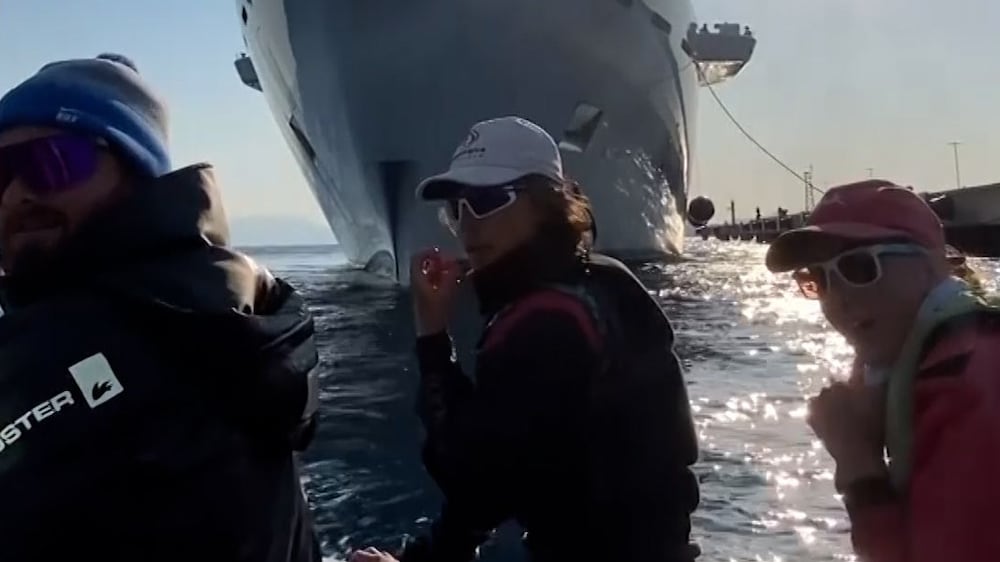
Which yachts have been detained?
On Monday, a superyacht linked to another Russian billionaire was detained by authorities after docking in Gibraltar.
The Axioma , believed to belong to Dmitrievich Pumpyansky, moored at Gibraltar on the southern tip of the Iberian Peninsula, Reuters TV footage showed.
Mr Pumpyansky, who is under UK and EU sanctions, owns Russia's largest steel pipe maker TMK. Data shows the 72-metre vessel is owned by a British Virgin Islands holding company called Pyrene investments, Reuters reported. An article published as part of the Panama Papers leaks names Mr Pumpyansky as a beneficiary of the holding.
On March 12, the world's biggest sailing yacht, called Sailing Yacht A and owned by Russian billionaire Andrey Igorevich Melnichenko , was seized by Italian police.
Several other luxury yachts have also been detained across Europe, including in Gibraltar, Mallorca in Spain's Balearic Islands and the French coast.
Here are 16 superyachts linked to wealthy Russians
1. Eclipse , a superyacht linked to sanctioned Russian oligarch Roman Abramovich , was this week spotted heading in the direction of Marmaris in Turkey.
2. Solaris , belonging to Mr Abramovich , moored in Bodrum at the start of the week.
3. The Axioma superyacht, belonging to Russian oligarch Dmitrievich Pumpyansky , who is on the EU's list of sanctioned Russians, was detained by authorities after docking in Gibraltar on Monday.
4. The Crescent , which was seized by the Spanish government in Tarragona, Spain, on March 17. The ship's owner is not publicly known, although it is believed to belong to Russian Igor Sechin, head of Rosneft Oil in Moscow.
5. Ragnar , owned by former KGB officer and Russian oligarch Vladimir Strzhalkovsky, who is not on the EU sanctions list.
6. Tango , owned by Russian billionaire Viktor Vekselberg, who was sanctioned by the US on March 11.
7. Lady Anastasia , owned by Russian arms manufacturer Alexander Mijeev, is retained at Port Adriano, Mallorca, as a result of sanctions against Russia and Belarus issued by the European Union.
8. Valerie was seized by the Spanish government in Barcelona, Spain, on March 15. Spanish newspaper El Pais reported that the ship is linked to Rostec State Corporation’s chief executive Sergey Chemezov.
9. The $578 million Sailing Yacht A owned by Russian billionaire Andrey Igorevich Melnichenko was seized by Italian police in the port of Trieste on March 12.
10. The 156-metre Dilbar superyacht is owned by Russian billionaire Alisher Usmanov.
11. La Datcha belongs to Russian billionaire businessman Oleg Tinkov.
12. Lady M , owned by Russian oligarch Alexei Mordashov, was seized by Italian police on March 5.
13. Amore Vero was seized in the Mediterranean resort of La Ciotat on March 3 by French authorities. The yacht is linked to Igor Sechin, a Putin ally who runs the Russian oil giant Rosneft.
14. Quantum Blue , owned by a company linked to Russian billionaire Sergei Galitsky, the head of Russian oil giant Rosneft, was seized in southern France on March 3.
15. Superyacht Luna is owned by Russian billionaire Farkhad Akhmedov.
16. Triple Seven is owned by Russian billionaire Alexander Abramov, according to media reports. The yacht was last up for sale in 2020 for €38 million ($41.85 million).
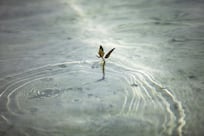
- International edition
- Australia edition
- Europe edition

France seizes yacht linked to Russian oligarch at Mediterranean port
Vessel linked to Igor Sechin taken as Hamburg authorities deny confiscation of Alisher Usmanov’s $600m superyacht
- Russia-Ukraine crisis: live news
France’s finance minister has announced the country has seized a yacht linked to Rosneft boss, Igor Sechin, in the Mediterranean port of La Ciotat, as German local authorities denied reports they had also seized the $600m superyacht belonging to Russian billionaire Alisher Usmanov .
French finance minister, Bruno Le Maire, said it had seized a yacht linked to Rosneft boss Igor Sechin in the Mediterranean port of La Ciotat.
The finance ministry said the yacht was owned by an entity of which Sechin had been identified as the main shareholder.
The announcement came as authorities in Hamburg denied reports that Usmanov’s yacht had been seized in a shipyard in the German port city.
“No yachts have been confiscated,” a spokesperson for Hamburg’s economic authority said. “A handover [of the yacht to its owner] is also currently not planned. No yacht is going to leave the port that is not allowed to do so.”
The Hamburg local authority said any order to seize properties subject to sanctions would have to come from higher federal customs authorities.
A Forbes report citing three sources in the yacht industry had reported on Usmanov’s 156-metre (512-foot) yacht Dilbar, valued at $600m and regarded as the largest motor yacht in the world by gross tonnage, was seized by German authorities on Wednesday.
Usmanov was on a list of billionaires to face sanctions from the European Union in response to Russia’s 24 February invasion of Ukraine .
Usmanov’s 156-metre (512-foot) yacht Dilbar, valued at $600m and regarded as the largest motor yacht in the world by gross tonnage, was seized by German authorities on Wednesday, according to a Forbes report based on three sources in the yacht industry.

The Guardian understands that repair works on the Dilbar yet have currently been put on hold, and that the ship is not in a seaworthy state.
The yacht has been in the yards of shipbuilding firm Blohm+Voss since late October. A spokesperson declined to give a statement but said that all projects by shipbuilder Lürssen would be treated “in accordance with the law”.
Forbes reported that representatives for Usmanov did not immediately respond to a request for comment.
Ukraine’s adviser to the minister of internal affairs, Anton Geraschenko, responded to the report on Telegram by saying the yacht should be sent to Ukraine and refitted as a missile cruiser.
Usmanov bought Dilbar in 2016 for a reported cost of $600m from German shipbuilder Lürssen, which custom-built it for him over 52 months.
The firm describes it as “one of the most complex and challenging yachts ever built, in terms of both dimensions and technology”.
At the time of its launch, Lürssen CEO, Peter Lürssen, said : “Dilbar has the most advanced security technologies of any superyacht in the world. But the things you read about it containing an anti-aircraft missile defence system are all nonsense.”
At 15,917 tonnes, it’s the world’s largest motor yacht by gross tonnage, and is typically staffed by a crew of 96 people, with space for 24 passengers in 12 suites. It has the largest pool ever installed on a yacht as well as two helicopter pads, a sauna, a beauty salon and a gym.
At least five other superyachts owned by Russian billionaires are now anchored or cruising in Maldives, an Indian Ocean island nation that does not have an extradition treaty with the US, ship tracking data showed.
The vessels’ arrival in the archipelago off the coast of Sri Lanka follows the imposition of severe western sanctions on Russia.

The Clio superyacht, owned by Oleg Deripaska, the founder of aluminium giant Rusal, who was sanctioned by the US in 2018, was anchored off the capital Male on Wednesday, according to shipping database MarineTraffic.
The Titan, owned by Alexander Abramov, a cofounder of steel producer Evraz, arrived on 28 February.
Three more yachts owned by Russian billionaires were seen cruising in Maldives waters on Wednesday, the data showed. They include the 88-metre (288 ft) Nirvana owned by Russia’s richest man, Vladimir Potanin . Most vessels were last seen anchored in Middle Eastern ports earlier in the year.
A spokesperson for Maldives’ government did not respond to a request for comment.
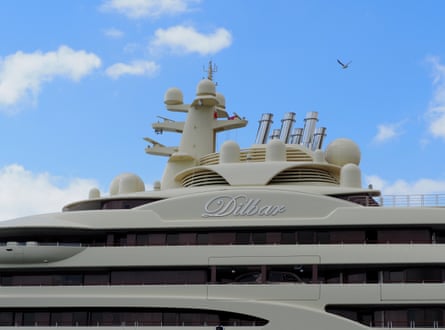
The US has said it will take strict action to seize property of sanctioned Russians.
“This coming week, we will launch a multilateral transatlantic taskforce to identify, hunt down, and freeze the assets of sanctioned Russian companies and oligarchs: their yachts, their mansions, and any other ill-gotten gains that we can find and freeze under the law,” the White House said in a tweet on Sunday.
Washington imposed sanctions on Deripaska and other influential Russians in 2018 because of their ties to president Vladimir Putin after alleged Russian interference in the 2016 US election, which Moscow denies.
- Alisher Usmanov
- Water transport
Most viewed
Watch CBS News
Russian Soyuz spacecraft brings crew of 3, including NASA astronaut, back to Earth
By William Harwood
Updated on: April 6, 2024 / 7:44 PM EDT / CBS News
A Russian Soyuz ferry ship undocked from the International Space Station and flew back to Earth early Saturday, bringing a Russian cosmonaut, a Belarusian guest flier and a NASA astronaut to a picture-perfect landing on the steppe of Kazakhstan.
Soyuz MS-24/70S commander Oleg Novitskiy, flanked on the left by Marina Vasilevskaya of Belarus and on the right by NASA astronaut Loral O'Hara, touched down about 90 miles east of the town of Dzhezkazgan at 3:17 a.m. EDT.
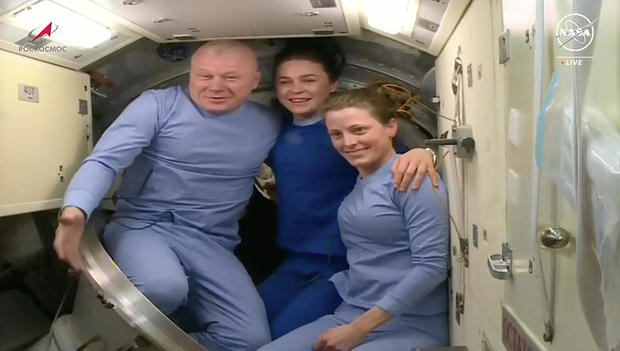
Russians recovery crews were on the scene within minutes to assist the returning station fliers out of their cramped Soyuz descent module as they began re-adjusting to the tug of gravity.
For veteran Novitskiy and first-time flier Vasilevskaya, the re-acclimation should be relatively easy. They launched on March 23 aboard the Soyuz MS-25/71S spacecraft along with NASA astronaut Tracy Dyson and docked at the station two days later.
Spending just two weeks aboard the station, they returned to Earth aboard the older Soyuz MS-24 spacecraft that carried station commander Oleg Kononenko, Nikolai Chub and O'Hara to the lab complex last September.
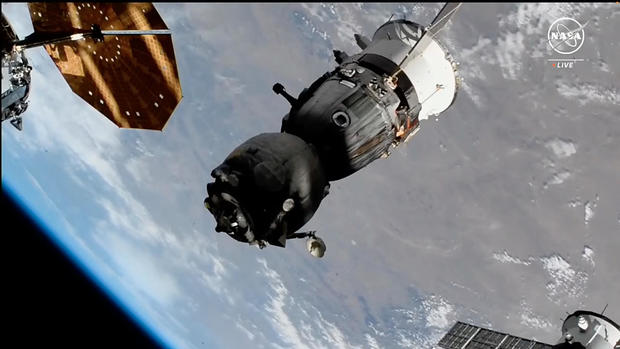
Kononenko and Chub are midway through a yearlong stay in space. They plan to return to Earth next September, along with Dyson, using the new MS-25 spacecraft delivered by Novitskiy. Novitskiy and Vasilevskaya brought O'Hara back to Earth aboard the older ferry ship she launched on last September .
With touchdown, O'Hara had logged 204 days off planet, completing 3,264 orbits covering 86.6 million miles. She also participated in a six-hour 42-minute spacewalk. Novitskiy and Vasilevskya logged 14 days in space, spanning 224 orbits and 5.9 million miles.
All three looked healthy and in good spirits as they rested on recliners near their charred Soyuz descent capsule, waited on by support personnel.

"I'm overwhelmed with emotions," said Vasilevskaya, speaking through a translator on NASA TV. "It's something incredible. I wish all people on Earth to treasure and cherish what they have, because this is precious.
"I thank all people of Belarus," she continued. "We actually wanted to stay a little longer, but it's great to be back. It was awesome to be on board the station."
Vasilevskaya, an accomplished ballroom dancer and flight attendant with Belavia Airlines, is the first citizen of Belarus, a staunch ally of Russia, to fly in space since the breakup of the Soviet Union.
While relations between the United States and Russia remain at or near Cold War levels, the two nations continue to cooperate in space, jointly operating the International Space Station.
For her part, Dyson said before launch that she enjoyed training with Vasilevskaya, adding "she's been a real delight to work with."

After brief medical checks and satellite phone calls home to family and friends, the trio was to be flown to Karaganda by helicopter. From there, O'Hara will head home to Houston aboard a NASA jet while Novitskiy and Vasilevskaya fly back to Star City near Moscow.
Left behind in space were ISS commander Kononenko, Chub, Dyson, cosmonaut Alexander Grebenkin and NASA astronauts Matthew Dominick, Michael Barratt and Jeanette Epps.
O'Hara's return to Earth completed a complex sequence of flights to replace five of the space station's seven long-duration crew members.
NASA first launched Dominick, Barratt, Epps and Grebenkin to the station March 3 aboard a SpaceX Crew Dragon spacecraft. They replaced four other fliers who returned to Earth aboard another Crew Dragon.
That cleared the way for launch of Novitskiy, Vasilevskaya and Dyson, delivering a fresh Soyuz and the NASA veteran to the station and then bringing O'Hara back to Earth.
- International Space Station
Bill Harwood has been covering the U.S. space program full-time since 1984, first as Cape Canaveral bureau chief for United Press International and now as a consultant for CBS News.
More from CBS News
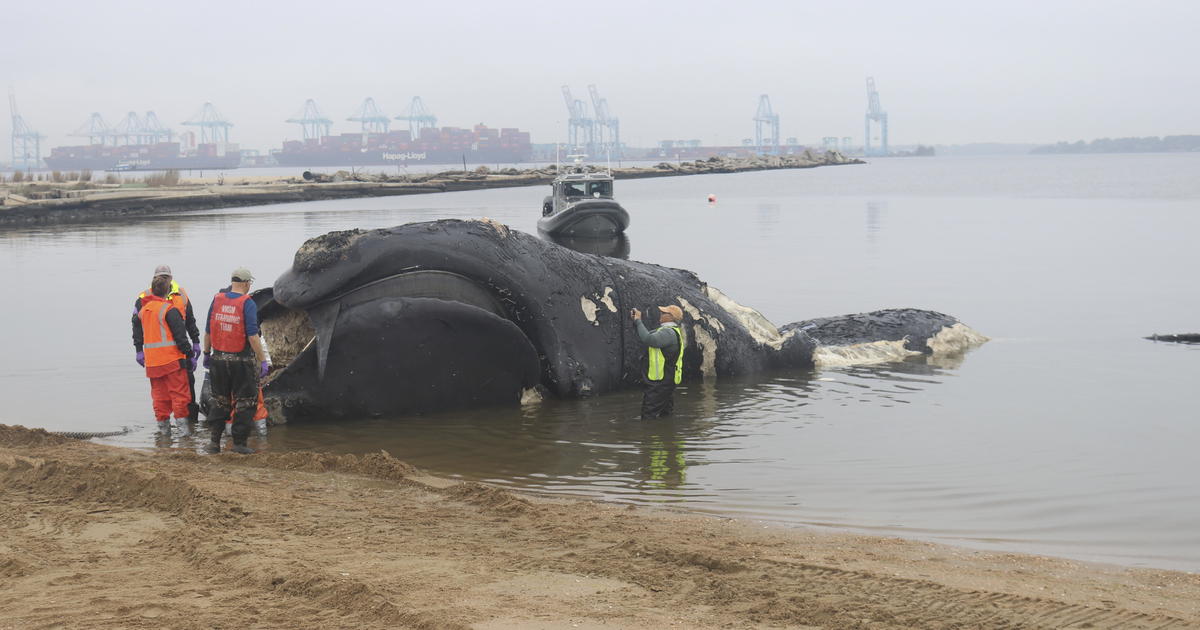
Endangered whale found dead off Virginia was killed in ship collision
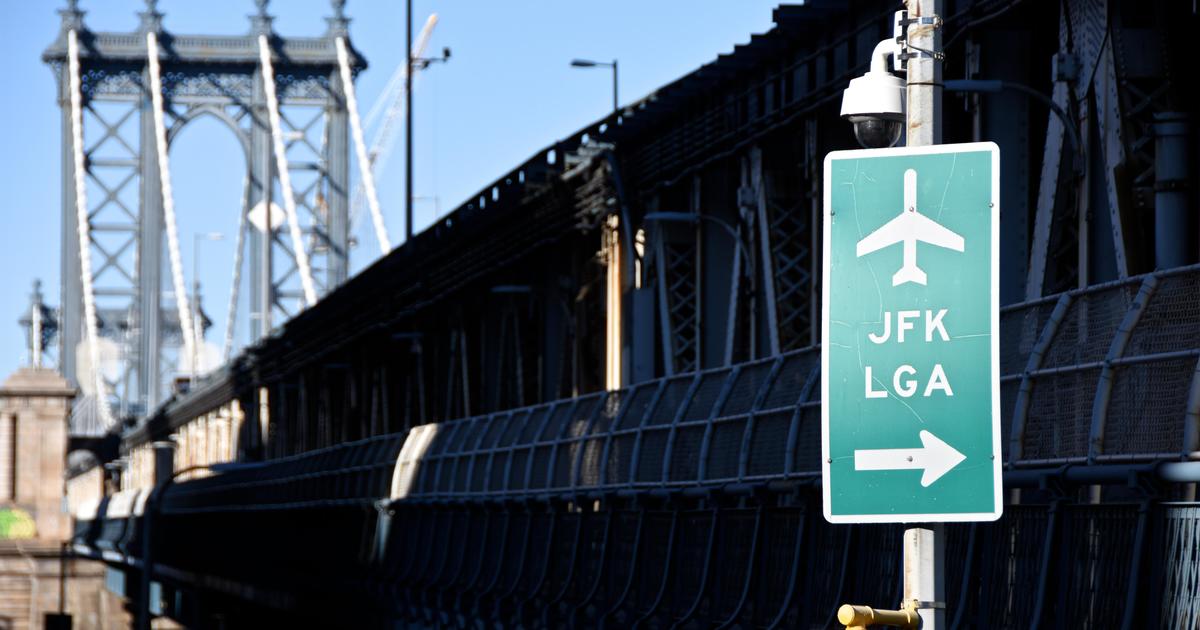
Earthquake snarls air and train travel in the New York City area
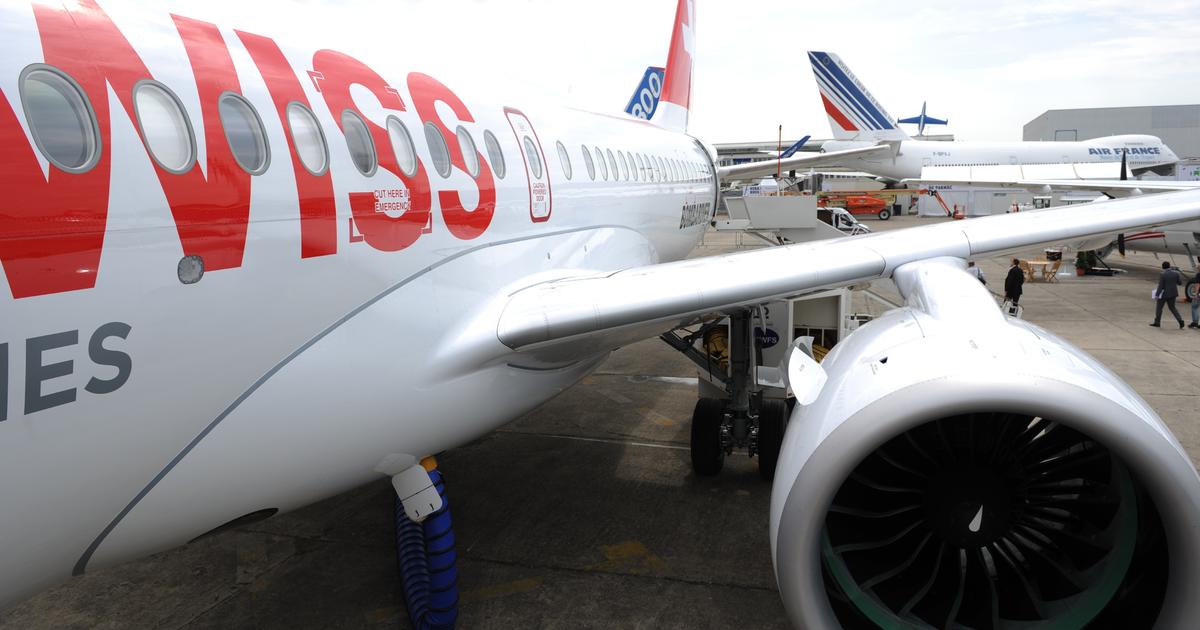
Flight forced to turn around after passenger tried to enter cockpit
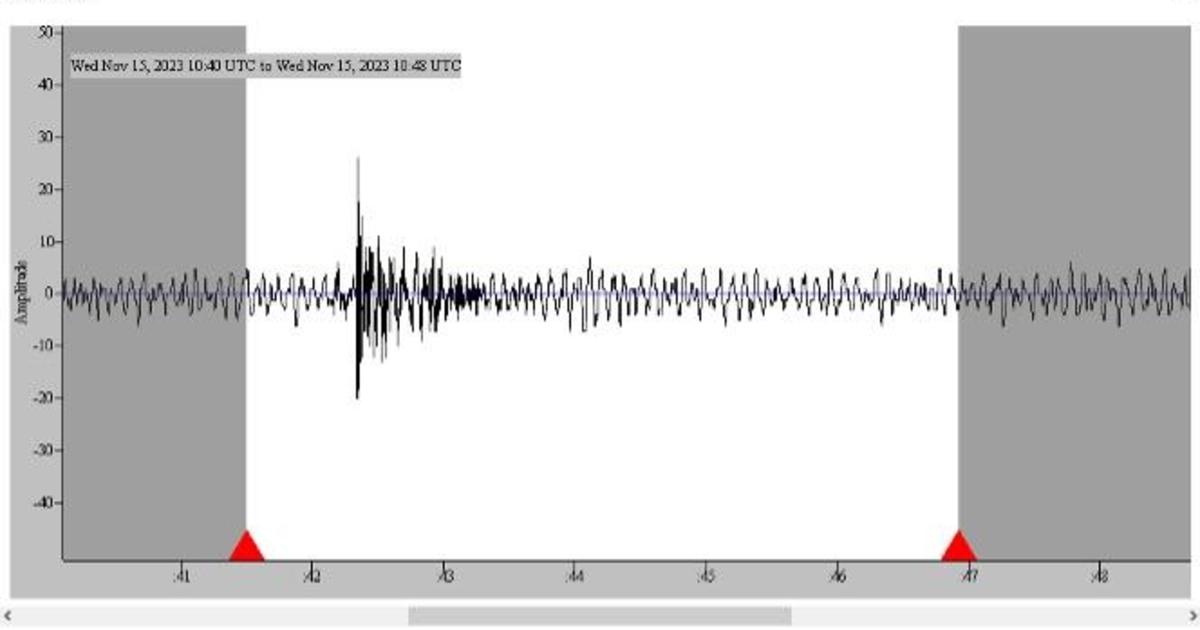
What causes earthquakes? The science behind why they happen


The global authority in superyachting
- NEWSLETTERS
- Yachts Home
- The Superyacht Directory
- Yacht Reports
- Brokerage News
- The largest yachts in the world
- The Register
- Yacht Advice
- Yacht Design
- 12m to 24m yachts
- Monaco Yacht Show
- Builder Directory
- Designer Directory
- Interior Design Directory
- Naval Architect Directory
- Yachts for sale home
- Motor yachts
- Sailing yachts
- Explorer yachts
- Classic yachts
- Sale Broker Directory
- Charter Home
- Yachts for Charter
- Charter Destinations
- Charter Broker Directory
- Destinations Home
- Mediterranean
- South Pacific
- Rest of the World
- Boat Life Home
- Owners' Experiences
- Interiors Suppliers
- Owners' Club
- Captains' Club
- BOAT Showcase
- Boat Presents
- Events Home
- World Superyacht Awards
- Superyacht Design Festival
- Design and Innovation Awards
- Young Designer of the Year Award
- Artistry and Craft Awards
- Explorer Yachts Summit
- Ocean Talks
- The Ocean Awards
- BOAT Connect
- Between the bays
- Golf Invitational
- Boat Pro Home
- Pricing Plan
- Superyacht Insight
- Product Features
- Premium Content
- Testimonials
- Global Order Book
- Tenders & Equipment

Spaceships and superyachts: How the industry is taking on the final frontier
The burgeoning space tourism market and the rise of next-generation airships has more in common with the yachting industry than you might think...
Star Trek icon William Shatner described his trip to the edge of space atop Blue Origin’s New Shepard rocket as “the most profound experience”. The 90-year old actor was moved to tears as he recounted his 11-minute journey with Blue Origin founder Jeff Bezos. “I’m so filled with emotion about what just happened,” he said.
Bucket lists the world over have been upgraded. The promise of such an extraordinary experience is helping power a boom in space tourism. Bezos has already sold more than £100 million in tickets for future rides into the unknown.
While New Shepard skirts the von Kármán line, which at 100 kilometres up is where humans are untethered from gravity, Elon Musk’s SpaceX is pushing higher and faster. The company has already taken astronauts and private citizens to the International Space Station, and Musk envisages ferrying many more back to the moon, on board his gigantic Starship rocket.
Scheduled to fly in 2024, Space Perspective will take adventurers to the edge of space, albeit in a degree more comfort than in the spacecraft of Bezos, Musk or Richard Branson’s Virgin Galactic programme. Space Perspective’s Spaceship Neptune space capsule will gracefully ascend to 30,480 metres at 19.3 kilometres an hour – slow enough to appreciate the curved horizon of Mother Earth, before returning to terra firma at a similar pace.
There are no G-forces to withstand, and no weightlessness to contend with. Travellers will be cocooned in luxury, says Space Perspective founder and co-CEO Jane Poynter. The inaugural Space Perspective trip will take around six hours – plenty of time to order cocktails as you soak up the astonishing view.
“We certainly thought long and hard about how we’re going to get a lot of people to space, to have that quintessential astronaut experience of seeing Earth from space – and having it be gentle and comfortable,” Poynter says. “I’ve been in this industry a long time. I have tremendous respect for what they [Bezos et al] are doing and the technology that they’ve developed, but we are completely focused on our differentiated experience, opening up space to as many people as possible, people who have otherwise not imagined themselves going to space. That’s our singular focus.”
There will be refreshments on board, Poynter says. “Of course, there’s a loo, Wi-Fi and everything that goes along with that. You don’t actually get the distraction of a weightless experience.”
Space Perspective carried out its first test flight in June 2021 from Kennedy Space Center. Poynter says it was “picture perfect”. The Spaceship Neptune capsule, lifted by space balloon, reached 30,480 metres, traversed the Florida peninsula, before splashing down in the Gulf of Mexico. The same route the passenger flights will eventually take. “That splash is a really safe way for us to terminate the flight; it’s fantastic,” Poynter says.
She sees the balloon as a major selling point. “Our flight is just inherently safe. The flight system has been flown by NASA and others thousands of times. It’s been very well tested. We’ve completely reimagined space flight. When we normally think about space flight, we think high Gs, a lot of acceleration. At 19 kilometres an hour, it’s a very gentle splashdown. The funnel below the capsule attenuates the splashdown, absorbs some of the impact. It truly is a spaceship that when it lands becomes a ship.”
When Space Perspective begins manned flights, it’ll be operating two Neptune capsules. “We are going to take it a little slow in the first year; we’ll do in the order of 24 flights, one every couple of weeks. Then grow very quickly from there. We’re planning to have each capsule do roughly 50 flights a year,” Poynter says.
While Space Perspective will initially operate out of Florida, the plan is to open up locations around the world. “As we grow, we add more capsules, and then every time we start operating in a new location, it automatically starts with two or three Neptune capsules.”
Poynter believes there are clear parallels with the superyacht industry when it comes to design and technology. “We have a number of people on our staff who have a lot of experience at sea, in designing and building boats and yachts,” she says. “The Neptune is a zero-emission spacecraft. Some of the things that we’re really interested in are already happening in the superyacht industry. Our vehicle is in the hydrogen economy, that’s how it operates. There are so many interesting things happening in the hydrogen world.” Hydrogen fuel cells, now in use on tenders, are a recurring feature of yacht and catamaran prototypes.
One Space Perspective hire is Vincent Bachet, who heads up manufacturing for the Neptune capsule. “He designed all the composite structures for the SpaceX Dragon capsule, as well as Falcon 9 (the partially reusable SpaceX two-stage-to-orbit medium-lift launch vehicle). He also has his own luxury yacht [composites] company,” says Poynter.
“Everything about space flight generally comes down to the weight of something. You’re always fighting that weight battle,” she continues. “So everything over the last 10 years has been miniaturised; all the electronics and battery systems. It’s only going to get better over the next two or three years.”
Industry migration seems to go both ways. An electric boat business called the Arc Boat Company, set up by former SpaceX engineers, has attracted investment from stars Will Smith, Kevin Durant and Sean Combs. Its first boat will be a 7.3 metre called Arc One , built in aluminium. Boasting 475 horsepower, it’ll reach 35 knots and be able to run for three to five hours.
Flying a little closer to home, next-generation airships won’t take clients to the edge of space, but they will offer an experience that’s out of this world. A high-tech take on the blimps and Zeppelins of old, they promise to take owner-operators and customers on a leisurely voyage from one extraordinary location to another.
Guillaume Hoddé, CEO and founder of AirYacht, explains: “We want to offer a new yachting experience. Our pitch is ‘sail the sky’.” The first AirYacht is scheduled to be delivered by the end of 2026. “We will then be able to produce two units in 2027 and four units per year depending on the order book.”
Exploiting the buoyancy of helium, the AirYacht has a flying height of 3,048 metres and a cruising speed of 50 knots. It can travel for a week without landing or refuelling. When it comes to fuel consumption, it’ll be 10 to 50 times less per kilometre than an 80-metre superyacht. Hoddé is currently finalising the design of his inaugural craft with superyacht designer Franck Darnet of Darnet Design.
Hoddé agrees that there are many similarities between airships and superyachts. For one thing, they’re big, he says. “Our first AirYacht will be 200 metres long, with 750 square metres of space inside and more than 300 square metres of outside terraces. They are peaceful, graceful, beautiful designs, sailing in the sky like flying boats. Even if their cruise speed will be much higher than that of ships, they will be able to either stay above a place, ‘anchored’ in the sky, cruise at low speed if you want to enjoy a landscape or go overnight from Nice to Chambord at 50 knots.”
They will be highly visible (“like a superyacht in the Monaco bay”) but also discreet (“like a yacht going to a remote place that no one can access”). “They will allow you to enjoy a place, like a ship anchored or at the harbour, but anywhere – on the ground next to Chambord or in the middle of the Grand Canyon, as well as at sea,” Hoddé says.
“When we thought about the design, we looked into the literature from Jules Verne to sci-fi or steampunk; in people’s minds, airships are often described and drawn as flying boats. Our pitch to Franck was straightforward: we want a flying yacht for yachting enthusiasts who want to sail the sky but also to reach places where no one has been before. Our AirYacht must be a yacht when landed at sea, but also must be a chalet when landed in a snowy valley, and a lodge when landed in the middle of the savannah.”
AirYacht will also use cutting-edge materials in its design. “Our partners are renowned experts in the superyacht and aeronautical industries,” Hoddé says. “An AirYacht is a lighter-than-air machine. It doesn’t fly with the help of an engine, but only because it is lighter than air. That means that we are fighting for weight optimisation. We are looking for the best technologies in terms of composite materials, windows, energy management and safety. And for that, we are looking at the most advanced yachts and aircraft.
“Because an AirYacht will offer an experience that will be more unique than any superyacht has offered today, we have to look for the best technologies,” he continues. “Take the example of energy management. The Residence – that’s what we call the part of the AirYacht we live in – will be fully autonomous, relying only on hydrogen.”
So what will make an AirYacht experience unique? There are two key innovations, says Hoddé. “The living part of the AirYacht can be detached from the flying part of it. You will be able to land your Residence on the ground or the water, and enjoy life in the Residence, like at home.
“When flying, the AirYacht is also capable of stationary flight,” Hoddé adds. While stationary, passengers, and even a tender or a car, can be disembarked without any need for a ground support, with a kind of elevator. Imagine disembarking from your 200-metre-long AirYacht in the middle of a golf course.”
When it comes to journeys, Hoddé says his dream AirYacht adventure is flying just above the rainforest canopy for days: “feeling, smelling, hearing the rainforest from my terrace, feeling so privileged to be part of it. Many people dream of a flight above the savannah, then landing the AirYacht for a few days in their own lodge.”
Hoddé believes there’s a clear synergy when it comes to ownership, too. “Yes, we do imagine superyacht owners owning an AirYacht. The AirYacht owner is already a yacht owner who knows how to operate a superyacht. They love flying, discovering the world and living exclusive, unique experiences. You don’t have to follow the coast when going from A to B, just go in a straight line; hangaring your AirYacht will be done on the ground in a dedicated facility. Just find a place where you can build the hangar and it’s OK. Our partner will also offer a network of hangars for the airships worldwide.
“We are also targeting companies that want to create a new concept – air cruises. Imagine luxury cruises that have never been done before,” he continues. “There are so many possibilities; for example, the US from west to east or the best castles of France. Sleep in the sky, have dinner in the sky, do a pit stop at a castle, disembark a few hundred metres from it with the elevator, visit and then re-embark in the AirYacht.
“Clearly a pivot point of our company was thinking not as a pure aeronautical player but as a superyacht player. Our competitors are within the superyacht industry. An AirYacht will cost around the same price as an 80- to 100-metre superyacht and less than a business jet. All our partners are chosen for their capabilities to think outside the box; they must think yacht first! We want to take the best of the superyacht industry and the aeronautical industry in order to create a new industry and a new business. What we’re looking at is the birth of two new industries: airship superyachts and an air cruise business.”
Cookson Adventures is an early entrant in the air cruise space. The experiential travel company has inked a deal with Hybrid Air Vehicles to charter the next-generation Airlander 10 airship.
Scheduled to enter service from 2025, the Airlander 10 is Hybrid Air Vehicles’ first production aircraft. It can stay airborne for up to five days, has an operating altitude of 3,000 metres, can fly in all weather conditions and take off and land from virtually any flat surface.
The aircraft’s ability to cruise at 50 knots, with the option to reduce even further to 25 knots for wildlife viewing, opens up the tantalising prospect of observing the annual migration in Africa or cruising over open desert in the Middle East. Up to 16 can live on board.
Henry Cookson, founder of Cookson Adventures, says guests can expect similarities between the luxury model of Airlander 10 and the yachting experience. “They are both luxurious platforms for adventure,” he says. “Airlander 10 will have a captain and full crew to look after every need and we will also be able to bring experts on board to enhance the itinerary and ensure each expedition is bespoke to each group.
“There are similarities in design too, with a focus on clean lines. It’s sleek, contemporary and aerodynamic. The dining set-ups will make the most of the spectacular views, while private viewing platforms allow guests to clearly observe natural landmarks and local wildlife.”
So, does he believe this new market will become as big as the charter yacht business? “We think there’s a huge market,” Cookson says. “As with a superyacht, the journey will be an experience in itself, which guests will want to enjoy in supreme comfort. The slow pace of travel, the low cruising altitude and large panoramic windows will afford incredible views over landscapes that just can’t be appreciated from a traditional fixed-wing aircraft or helicopter. This in some ways is similar to travelling on a superyacht, but at the same time will offer a very different view of the world.”
Cookson doesn’t think the Airlander will replace the superyacht experience; rather he thinks it will complement it. “Just as submersibles give guests the opportunity to see what’s below the water, the Airlander will allow you to arrive at your destination and gain an aerial perspective. Superyachts are great at exploring the coasts of our planet, subs are great for exploring the depths and airships will offer a new way to explore the interior of continents, such as Antarctica and Africa. The journey will be part of the enjoyment, as you see wildlife and landscapes from the comfort of the bar and the communal lounge.”
If you’re eager to sojourn in Earth orbit, Stellar Frontiers can help out. The latest venture from Geordie Mackay-Lewis, co-founder of experiential travel and yachting company Pelorus, is working with commercial space flight companies to put the affluent into orbit. To date, just a handful of individuals have made it to the International Space Station. It’s a rare club – but if you’re prepared to put in the training, Mackay-Lewis can put you in touch with the right people. His team will also get you on an astronaut training programme or organise a zero-gravity flight on board an Air Zero G aircraft.
“We are essentially creating the brokerage model for space,” explains Mackay-Lewis. “This partially exists for the payload side, but not for the human side – we feel now is the right time to develop this service for the industry. Stellar Frontiers acts as the mission management company taking care of all the planning, training, comms and administration. We work closely with our clients to make space simple and with all the launch providers to ensure smooth mission management.”
The long-term future of space tourism, he predicts, will be dominated by SpaceX. “Their recent success with Inspiration4, becoming the launch provider for the International Space Station and Axiom Station (soon to be the first commercial laboratory and residential infrastructure in space) and with their new rocket Starship coming online soon, will allow them to bring down the cost of space travel significantly and maintain market dominance.”
Mackay-Lewis says there are distinct differences between space tourism and airship propositions. “I see these as very different sectors,” he says. “Airships will provide a sustainable, slow and luxury form of travel, which is timely for post-Covid trends. I also see these aircraft being run similarly to the airline model, by companies such as OceanSky Cruises.”
Think of them as explorer superyachts of the skies, he says. “You will be able to access all remote areas of the planet in comfort and safety from your airship in the near future. I see them as very similar platforms with similar clientele. I think there will be less private ownership and much more of a charter market.”
However, while airships and spacecraft differ in functionality and design, they share a common drive toward sustainability and luxury, Mackay-Lewis says. “All sectors are developing more sustainable technologies, fuels and materials in line with efficient econometrics and consumer demand. And, likewise, both the airships and now the space sector recognise that the more luxurious they can make their propositions, the more appealing the product is to those who can actually afford it. A good example is industrial architect and designer Philippe Starck, who has been commissioned to design luxury pods for the Axiom Station and a new astronaut training facility for Orbite. This is just a snapshot of what is to come for the luxury space sector.”
So, can Mackay-Lewis envisage a time when superyacht owners will jaunt into space before splashing down near their yachts?
“It’s a lovely idea, but maybe a little fanciful for a while,” he says. “As with all yacht owners, time is the commodity, so I can see them using space travel to access their yachts in less time. [Elon Musk’s] Starship could deliver them to the other side of the planet in less than an hour; however, maybe supersonic flight will catch up before then.”
One thing, though, is for sure. For superyacht owners interested in space, many exciting options loom on the horizon.
More stories
Most popular, from our partners, sponsored listings.
Russia says main chance for dialogue with US is on arms, including in space
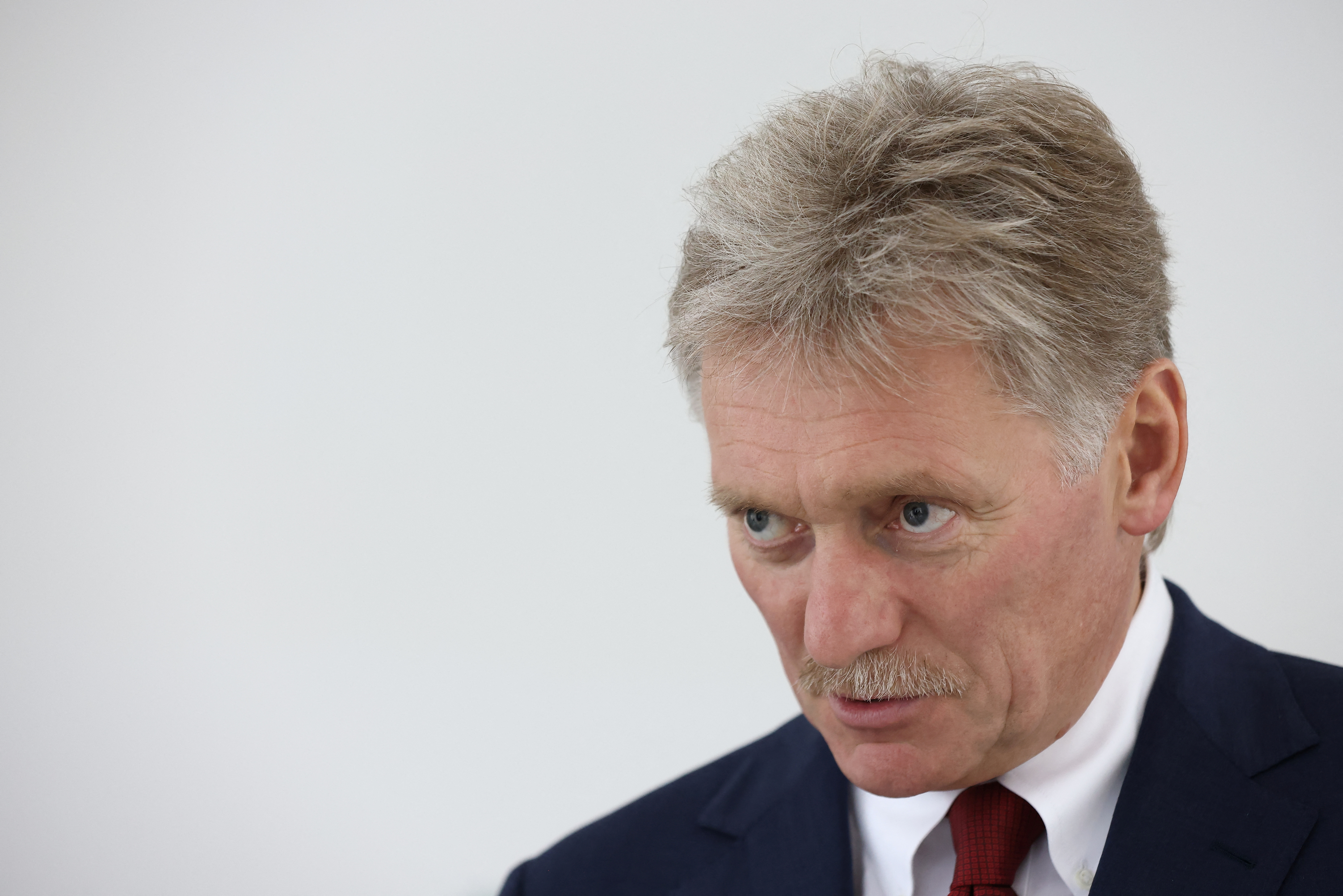
The Reuters Daily Briefing newsletter provides all the news you need to start your day. Sign up here.
Reporting by Dmitry Antonov Writing by Mark Trevelyan Editing by Peter Graff
Our Standards: The Thomson Reuters Trust Principles. , opens new tab
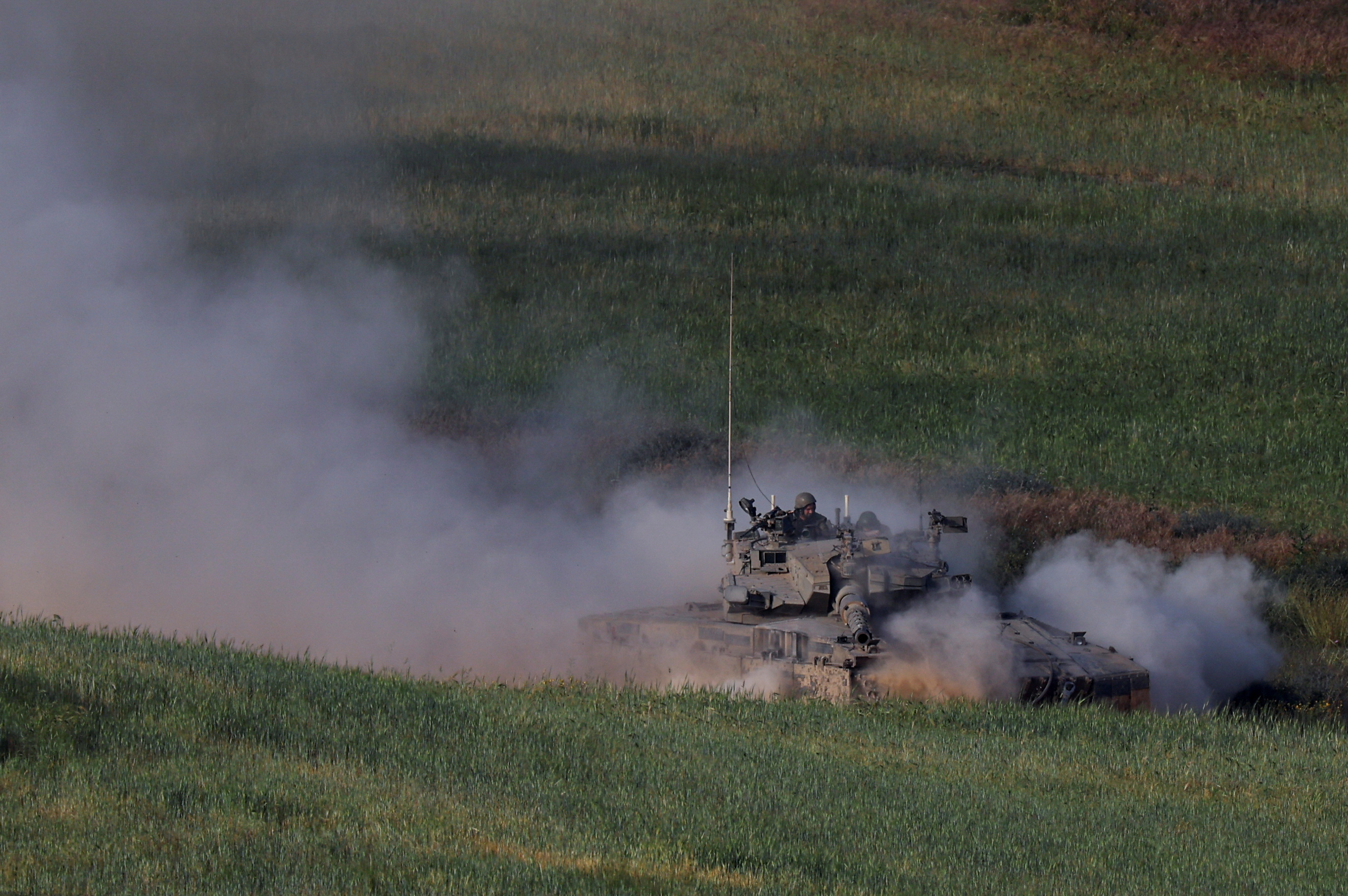
What happened in Rwanda's 1994 genocide?
Following are some details about the genocide in Rwanda in 1994 that killed more than 1 million people. Rwanda marked the 30th anniversary on Sunday.

The Tunisian coastguard has retrieved the bodies of 13 migrants off Tunisia and rescued 1,867 others in a number of separate incidents in the Mediterranean, the national guard said on Sunday.
Soyuz capsule with crew of 3, including 1st female astronaut from Belarus, lands safely to end ISS mission
The trio touched down in Kazakhstan today (April 6) at 3:18 a.m. ET.
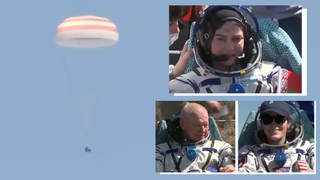
The first female Belarusian in space, alongside a NASA astronaut and a Russian cosmonaut, came back to Earth early this morning (April 6).
A Rusian Soyuz spacecraft carrying NASA astronaut Loral O'Hara, Roscosmos cosmonaut Oleg Novitskiy, and spaceflight participant Marina Vasilevskaya of Belarus landed near Karaganda, Kazakhstan at 3:17 a.m. EDT (0717 GMT; 12:17 p.m. local Kazakhstan time) , about 3.5 hours after departing the International Space Station (ISS) at 11:54 p.m. EDT (0354 GMT) on Friday April 5.
O'Hara, selected by NASA in 2017, and Vasilevskaya were both on their first missions. Novitskiy had already conducted three long-duration missions aboard the ISS: Expeditions 33/34 in 2012-13, Expeditions 50/51 in 2016-17 and Expeditions 64/65 in 2021.
Related: 3 spaceflyers arrive at the ISS aboard Russian Soyuz spacecraft
Novitskiy, Vasilevskaya and NASA astronaut Tracy Caldwell Dyson lifted off from Kazakhstan on March 23 aboard a different Soyuz. Their launch came after a rare abort of a Soyuz rocket two days before, which was traced to a battery issue that was swiftly resolved. O'Hara, meanwhile, launched on yet another Soyuz last September, spending 204 days in space before coming home today.
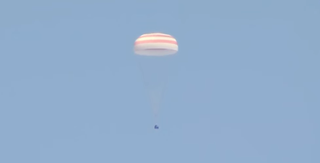
Belarus is a military ally of Russia, particularly after the latter's internationally condemned invasion of Ukraine in 2022 that is still ongoing. Belarus was thus invited by Russia for a short-term ISS mission. (NASA and other space agencies severed most of their relationships with Russia after the invasion, but the nation's participation in the ISS program program continues more or less unchanged.)

Flight attendant Vasilevskaya, 33, won her seat through the Belarus Academy of Sciences and Belarus Space Agency after a nationwide contest that attracted 3,000 applicants. She and six other finalists were considered for the flight; when Vasilevskaya was chosen, her backup was 28-year-old pediatric surgeon Anastasia Lenkova.
Get the Space.com Newsletter
Breaking space news, the latest updates on rocket launches, skywatching events and more!
"I'm overwhelmed with emotions. It's something incredible," Vasilevskaya said immediately after being lifted from the Soyuz capsule. "I wish all people on Earth to treasure and cherish what they have because it is precious.
"We wanted to stay longer [on the ISS], but it is great to be back."

Each of the crew members was showered with gifts after being lifted from the Soyuz capsule including Matryoshka dolls, or stacking dolls, bearing their likenesses.
— 3 spaceflyers arrive at the ISS aboard Russian Soyuz spacecraft
— Russian Soyuz rocket suffers rare last-minute abort during launch of 3 astronauts to ISS (video)
— Soyuz spacecraft: Backbone of the Russian space program
Vasilevskaya is the first citizen of the Republic of Belarus to reach space. Pyotr Klimuk and Vladimir Kovalyonok, however, were both from the former Belarus Soviet Socialist Republic (SSR) and flew to space for the first time in 1973 and 1977, respectively. (Belarus and a number of other former Soviet states became independent after the USSR collapsed in the early 1990s.)
The Soyuz MS-25 spacecraft, which carried Vasilevskaya, O'Hara and Novitskiy to orbit about two weeks ago, is still docked to the ISS. It will come back in the fall with Dyson and cosmonauts Oleg Kononenko and Nikolai Chub, after the Russians complete a year in space.
The space station is also currently host to the SpaceX Crew-8 Dragon spacecraft with the remaining astronauts of Expedition 71: NASA astronauts Matthew Dominick, Michael Barrett and Jeannette Epps and cosmonaut Alexander Grebenkin. They launched on March 4 for an expected half-year stay in space.
Join our Space Forums to keep talking space on the latest missions, night sky and more! And if you have a news tip, correction or comment, let us know at: [email protected].

Elizabeth Howell (she/her), Ph.D., is a staff writer in the spaceflight channel since 2022 covering diversity, education and gaming as well. She was contributing writer for Space.com for 10 years before joining full-time. Elizabeth's reporting includes multiple exclusives with the White House and Office of the Vice-President of the United States, an exclusive conversation with aspiring space tourist (and NSYNC bassist) Lance Bass, speaking several times with the International Space Station, witnessing five human spaceflight launches on two continents, flying parabolic, working inside a spacesuit, and participating in a simulated Mars mission. Her latest book, " Why Am I Taller ?", is co-written with astronaut Dave Williams. Elizabeth holds a Ph.D. and M.Sc. in Space Studies from the University of North Dakota, a Bachelor of Journalism from Canada's Carleton University and a Bachelor of History from Canada's Athabasca University. Elizabeth is also a post-secondary instructor in communications and science at several institutions since 2015; her experience includes developing and teaching an astronomy course at Canada's Algonquin College (with Indigenous content as well) to more than 1,000 students since 2020. Elizabeth first got interested in space after watching the movie Apollo 13 in 1996, and still wants to be an astronaut someday. Mastodon: https://qoto.org/@howellspace
SpaceX fires up huge Super Heavy booster ahead of 4th Starship test flight (photos, video)
Watch live as Russian Soyuz spacecraft carrying 3 spaceflyers departs the ISS tonight
Which places on Earth witness the most solar eclipses?
Most Popular
By Robert Lea April 06, 2024
By Elizabeth Howell April 06, 2024
By Meredith Garofalo April 05, 2024
By Robert Lea April 05, 2024
By Elizabeth Howell April 05, 2024
By Stefanie Waldek April 05, 2024
By Mike Wall April 05, 2024
By Harry Baker April 05, 2024
By Jeff Spry April 05, 2024
- 2 I'm driving 6 hours through New York's Adirondacks to see the 2024 total solar eclipse from Potsdam. Here's why.
- 3 Total solar eclipse 2024: Live updates
- 4 This Week In Space podcast: Episode 105 — Apoc-eclipse 2024!
- 5 Total solar eclipse 2024: Here's the national weather forecast for April 8

A Soyuz capsule carrying 3 crew from the International Space Station lands safely in Kazakhstan
M OSCOW (AP) — A Russian space capsule with two women and one man safely landed in a steppe in Kazakhstan on Saturday after their missions aboard the International Space Station.
The Soyuz MS-24 carrying Russia’s Oleg Novitsky, NASA's Loral O'Hara and Marina Vasilevskaya of Belarus touched down southeast of the remote town of Dzhezkazgan at 12:17 p.m. Kazakh time (0717 GMT).
Those remaining at the orbiting outpost are NASA astronauts Michael Barratt, Matthew Dominick, Tracy Dyson and Jeannette Epps as well as Russian cosmonauts Nikolai Chub, Alexander Grebenkin and Oleg Kononenko.
O’Hara arrived at the International Space Station on Sept. 15, 2023, spending a total of 204 days there, NASA said.
Novitsky and Vasilevskaya blasted off to space on March 23, two days later than initially planned. The launch of a Soyuz spacecraft carrying them and Dyson, scheduled for March 21, was aborted at the very last minute due to a voltage drop in a power source, according to Yury Borisov, head of Russia's space agency Roscosmos.
The delay resulted in a two-day, 34-orbit trip to the space station for the crew. If the launch had gone as scheduled, the journey would have been much shorter, requiring only two orbits.
The space station, which has served as a symbol of post-Cold War international cooperation, is now one of the last remaining areas of collaboration between Russia and the West amid tensions over Moscow’s military action in Ukraine. NASA and its partners hope to continue operating the orbiting outpost until 2030.
Russia has continued to rely on modified versions of Soviet-designed rockets for commercial satellites, as well as crews and cargo to the space station.

- Mobile Site
- Staff Directory
- Advertise with Ars
Filter by topic
- Biz & IT
- Gaming & Culture
Front page layout
Russia needs Amur-acle —
Russia has a plan to “restore” its dominant position in the global launch market, "so we are working on the same trail blazed by korolev.".
Eric Berger - Apr 1, 2024 3:17 pm UTC

It has been a terrible decade for the Russian launch industry, which once led the world. The country's long-running workhorse, the Proton rocket, ran into reliability issues and will soon be retired. Russia's next-generation rocket, Angara, is fully expendable and still flying dummy payloads on test flights a decade after its debut. And the ever-reliable Soyuz vehicle lost access to lucrative Western markets after the Russian invasion of Ukraine.
Yet there has been a more fundamental, underlying disease pushing the once-vaunted Russian launch industry toward irrelevance. The country has largely relied on decades-old technology in a time of serious innovation within the launch industry. So what worked at the turn of the century to attract the launches of commercial satellites no longer does against the rising tide of competition from SpaceX, as well as other players in India and China.
Through the first quarter of this year, Russia has launched a total of five rockets, all variants of the Soyuz vehicle. SpaceX alone has launched 32 rockets. China, too, has launched nearly three times as many boosters as Russia.
However, Russia has a plan to reclaim the dominance it once held in the global launch industry. In a recent interview published on the Roscosmos website (a non-geo-blocked version is available here ) the chief of the Russian space corporation, Yuri Borisov, outlined the strategy by which the country will do so.
The first step, Borisov said, is to develop a partially reusable replacement for the Soyuz rocket, called Amur-CNG. The country's spaceflight enterprise is also working on "ultralight" boosters that will incorporate an element of reusability.
"I hope that by the 2028–2029 timeframe we will have a completely new fleet of space vehicles and will be able to restore our position in the global launch services market," Borisov said in the interview, which was translated for Ars by Rob Mitchell.
A miracle, Amur
Russia has previously discussed plans to develop the Amur rocket (the CNG refers to the propellant, liquified methane). The multi-engine vehicle looks somewhat similar to SpaceX's Falcon 9 rocket in that preliminary designs incorporated landing legs and grid fins to enable a powered first-stage landing.
The country's space industry first unveiled its Amur plans back in 2020, when officials said they were targeting a low price of just $22 million for a launch on Amur, which would be capable of delivering 10.5 tons to low-Earth orbit. Essentially, then, it would offer about half the carrying capacity of a Falcon 9 rocket for one-third of the price.
At the time, Roscosmos officials were targeting a 2026 debut for Amur. Had they been able to deliver such a capability, it would undoubtedly be an attractively priced offering. Alas, the year 2026 appears to be off the table now. Through his comments, Borisov indicated that Amur will not be ready before 2028 or 2029.
Since there has been almost a year-for-year slippage in that date since Amur's announcement in 2020, it seems likely that even this target late in the decade is unrealistic.
reader comments
Channel ars technica.

IMAGES
COMMENTS
Yacht Space, Russi (Italia). 32 likes · 20 talking about this. ☕️ Caffetteria 12V Sistemi per la purificazione dell'acqua 12V ‼️ Sistema di Allarme 12V
Yacht Space Maritime Transportation Russi, Ravenna 5 followers Qualità di servizi e accessori esclusivi dedicati al mondo nautico.
Solaris, a superyacht linked to Russian oligarch Roman Abramovich, is seen docked in Bodrum, Turkey on March 21. Ali Balli/Anadolu Agency/Getty Images. This sudden turn of events have served as a ...
Find company research, competitor information, contact details & financial data for YACHT SPACE SRL of RUSSI, RAVENNA. Get the latest business insights from Dun & Bradstreet.
In August 2021 — about six months before Russia's Ukraine invasion — Russians owned the second-largest share of yachts over 40 meters in length, according to a report from the industry ...
The superyacht Clio is linked to Oleg Deripaska, an industrialist with close ties to President Putin, who has been sanctioned by the UK and the US. It has its own support vessel called Sputnik ...
A U.S.-based luxury yacht broker is advertising for sale a 168-foot (51-metre) superyacht linked to sanctioned Russian billionaire Igor Kesaev for 29.5 million euros (roughly $29 million ...
Even before the US vowed to come for the yachts, Russia's oligarchs appeared to be anticipating the move. ... Graceful, which boasts a helipad, enough space for 12 guests and 14 crew, and a ...
Gaia Pianigiani/The New York Times. MARINA DI CARRARA, Italy— The Italian police are in a race to finish investigating the ownership of a $700 million superyacht, which U.S. officials say is ...
Analysts report an increase in Russian-linked yachts which are turning off the automatic identification system (AIS) equipment used for tracking large vessels. The system can be turned off for ...
The Crescent at a value of $600 million and a length of 443 feet is one of the largest yachts in the world. The boat that is said to feature a large glass-bottom pool, a helicopter hangar and a ...
In fact, the Spaceyacht concept is the result of a collaboration between two companies: My Ocean Yachts and Space Experiences.My Ocean Yachts in helping new, young customers who are interested ...
Russian crew members on a mysterious $700-million luxury yacht that U.S. officials say could be owned by President Vladimir V. Putin of Russia abruptly left their jobs and the Tuscan coastal town ...
By Elif Ince, Michael Forsythe and Carlotta Gall. Oct. 23, 2022. PORT AZURE, Turkey — On a hot August evening at a marina on Turkey's southern coast, the crew of the Flying Fox was hard at ...
Worth $20.7 billion, Vagit Alekperov is the fourth-richest person in Russia. With such unending chasms of wealth come some tangible, sailable benefits, and Alekperov has two of them in the form of a 108 million superyacht Galactica and a relatively modest 114-footer vessel 'Space'. The Russian tycoon who owns Heesen is one of the world's largest superyacht builders and was sanctioned by ...
In total, the detained superyachts of sanctioned Russian tycoons are worth $2.25 billion. Many of them are longer than a blue whale and boast elaborate luxury features like infinity pools, spas ...
15. Superyacht Luna is owned by Russian billionaire Farkhad Akhmedov. 16. Triple Seven is owned by Russian billionaire Alexander Abramov, according to media reports. The yacht was last up for sale in 2020 for €38 million ($41.85 million). Updated: March 24, 2022, 1:03 AM. Russia Ukraine.
533-foot-long superyacht Eclipse owned by Russian businessman Roman Abramovitch lies at anchor in ... it's reported that the eight-deck-tall yacht has accommodation space to sleep 36 guests, as ...
At 15,917 tonnes, it's the world's largest motor yacht by gross tonnage, and is typically staffed by a crew of 96 people, with space for 24 passengers in 12 suites. It has the largest pool ...
Russian yachts are headline-grabbing targets. The country's tycoons have been enthusiastic buyers of luxury boats, an industry that was worth 8 billion euros in 2021, according to Bain & Company.
Russia and the U.S. team up in space to relocate Soyuz to new ISS port 03:21. A Russian Soyuz ferry ship undocked from the International Space Station and flew back to Earth early Saturday ...
The development of a suborbital unpiloted spacecraft dubbed Selena Space Yacht began two years ago, he noted. According to the designer's idea, the vehicle will enter space at a maximum speed of 3.5 mach (2.685 miles per hour) to a height of 120-140 kilometers and will return back into the atmosphere at a speed of 0.85 mach.
One Space Perspective hire is Vincent Bachet, who heads up manufacturing for the Neptune capsule. "He designed all the composite structures for the SpaceX Dragon capsule, as well as Falcon 9 (the partially reusable SpaceX two-stage-to-orbit medium-lift launch vehicle). He also has his own luxury yacht [composites] company," says Poynter.
The Biden administration is in talks with Russia and allied nations to try and prevent Moscow from positioning an anti-satellite nuclear weapon in space, a senior Pentagon space official said Friday.
MOSCOW, April 5 (Reuters) - Russia said on Friday that strategic security issues, including space-based weapons, were the main potential area for dialogue with the United States. The U.S. plans to ...
The trio touched down in Kazakhstan today (April 6) at 3:18 a.m. ET. The first female Belarusian in space, alongside a NASA astronaut and a Russian cosmonaut, came back to Earth early this morning ...
In this grab taken from video released by the Roscosmos Space Corporation, NASA astronaut Loral O'Hara sits in a chair shortly after the landing of the Russian Soyuz MS-24 space capsule near ...
O'Hara arrived at the International Space Station on Sept. 15, 2023, spending a total of 204 days there, NASA said. Novitsky and Vasilevskaya blasted off to space on March 23, two days later ...
The country's space industry first unveiled its Amur plans back in 2020, when officials said they were targeting a low price of just $22 million for a launch on Amur, which would be capable of ...
Lu notes that Space Yacht parties, which are currently on pause due to Covid-19, are known for having surprise lineups that can include anyone from a massive DJ who recently sold out an arena to ...